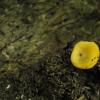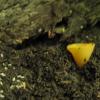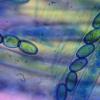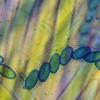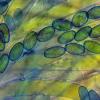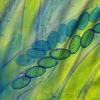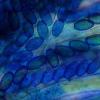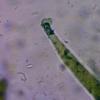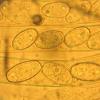
15-12-2025 15:48
 Danny Newman
Danny Newman
Melanospora cf. lagenaria on old, rotting, fallen

15-12-2025 15:54
 Johan Boonefaes
Johan Boonefaes
Unknown anamorph found on the ground in coastal sa

15-12-2025 21:11
 Hardware Tony
Hardware Tony
Small clavate hairs, negative croziers and IKI bb

15-12-2025 07:09
 Danny Newman
Danny Newman
indet. Rutstroemiaceae sp. on unk. fallen leavesMc

15-12-2025 07:05
 Danny Newman
Danny Newman
Pseudosclerococcum golindoi (det: Zotto)near Cosb

15-12-2025 11:49
 Danny Newman
Danny Newman
ITS sequences from the following two collections B

15-12-2025 12:34
 Danny Newman
Danny Newman
indet. Rhytismataceae on oak leafnear Purchase Roa

09-12-2025 12:06
 Andgelo Mombert
Andgelo Mombert
Bonjour,Je recherche l'article concernant Hypobryo

... only 1 ascoma, found at 2.6.2014 in Thuringia, National Park "Hainich", on bark of a lying log of Quercus. The very small apothecium was about 8 mm large (or so). First I did not think of a Peziza but the asci are clearly iodine-positive. The spores I measured are about 16,5-18,5/8,5-10 µm, but there are (almost) only spores inside the ascus. The ascoma is perhaps not fully ripe, but the spores show a well-developed ornamentation.
Today I re-examined it and made new fotos - but I do not come to a conclusion again.
Can somebody give me a hint?
Best regards from Lothar
P.S. The last foto was taken at the day of collection (there was few time then) - and as far as I remember (right?) it was examined in water - so the spore could be living still.

Yes, the last photo shows living spores. The asci react blue only at the apex or entirely?
With very small you actually mean 8 mm or 0.8 mm (for me 8 mm is very large :-).
Zotto

Hello Zotto,
thank you very much for the confirmation of the living spore.
8 mm is very large for a Calycellina or a Hamatocanthoscypha (or better: much too large), but for a ripe Peziza 8 mm is quite small.
The asci react blue as a whole, but the most at the top - as is quite typical for a Peziza. Or do you have another idea?
Best regards, Lothar


I've seen similar collection and called it P. polaripapulata, those small LBs and ornamentation with flat polar caps looked the same. Young apothecia were plainly yellow, only later they gradually changed to olive with coarsely furfuraceous receptacle. But in Hansen et al 1998 (New and rare species of Pezizales from calcareous woodlands in Denmark) they say this species should have aporhynchous base (the collection I studied had croziers too).
Viktorie

Hello Victorie,
thanks a lot for your hint - I did not think of an apiculate form, because the ornament is not very conspicuously stronger at the spore ends for me. But perhaps this judgment is not right.
Best regards, Lothar

Hello Zotto,
I did not take a foto of the IKI-reaction of the ascus-apices. Those reacted strong, and a small way down the reaction stopped or got weaker, as is typical for Peziza. But the region of the basal asci (above the subhymenium) stained bluish as a whole, so I considered the whole asci as positive (see picture). But - I do not think this character is of high value in Peziza, at least not as far as I know.
Best regards, Lothar
it's funny - when I first saw the picture of the fungus I spontaneously thought of a collection of what we determined later on as Peziza obtusapiculata, i.e. an apiculate species like P. polaripapulata. The ecology would fit, too. The lack of the typical apiculi could be due to the fact that Lothar's specimen was not yet fully mature. But if that were the case, we would have to assume that the apiculi develop only very late, as in some Gyromitra/Discina species. I do not know whether this process has already been scientifically studied with special regard to the apiculate Pezizas.
Regards, Till

I cannot find an indication for a Peziza that reacts strongly blue at the apex and weakly so down to the base. Maybe someone knows.
Zotto

Hallo Till und Zotto,
vielen Dank für die weiteren interessanten Informationen! Mal sehen, ob sich noch etwas ergibt ...
Herzliche Grüße von Lothar

Hallo Lothar,
ich wäre auch recht sicher, dass dies P. polaripapulata ist.
Jung feucht olivschwarzgrün, dann mehr und mehr ockergelb.
Das Ornament ist nur eine polare Verdickung, kein echtes abstehendes Ornament wie bei den anderen apiculatsporigen, und soweit ich weiß ist polaripapulata auch gar nicht direkt mit apicualta und den anderen verwandt.
Ich habe die Art(en) in einem Artikel im Boletus jüngst gegenübergestellt. Ich maile dir den mal zu.
beste Grüße,
Andreas

Hallo Andreas,
vielen Dank für die Bestätigung von Victories Vermutung!
Der Fund stammt ja aus dem Hainich-Projekt - vielleicht kann er noch zugeordnet werden. Eine Stammnummer habe ich nicht mehr, aber mit dem Datum und der Notiz auf dem Zettel müsste es noch gehen (?).
Ja - den Artikel von Dir nehme ich gerne :-)
Lieben Gruß von Lothar
